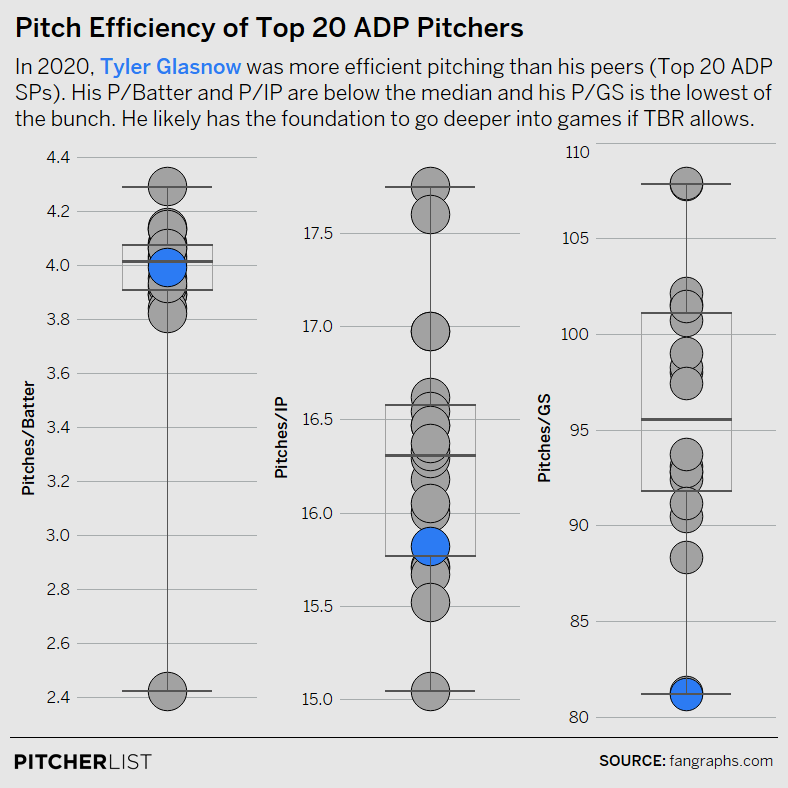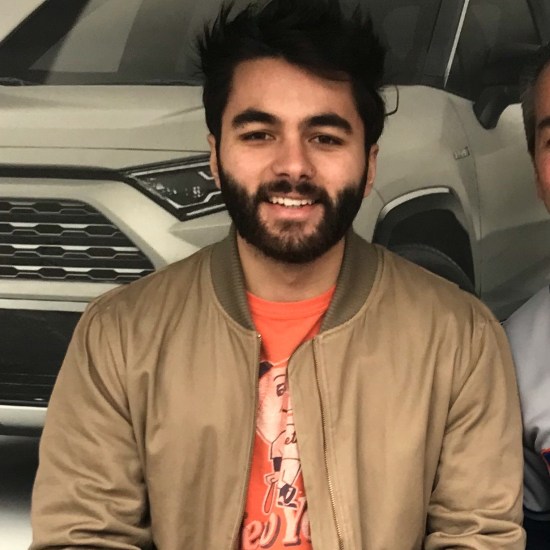Starting pitchers play a cat-and-mouse game with their opponents.
Apart from needing the stuff required to pitch at the highest level, it is paramount to keep hitters off-balance. It is far easier to do so when there are an array of different pitches for them to worry about.
Guys like Trevor Bauer, Yu Darvish, and Kenta Maeda have the ability to mix and match around six different pitches to stifle whoever comes in the box. Few pitchers can match that type of diversity, but it is widely accepted that three distinct pitches are the baseline for being an upper-echelon starting pitcher.
Pitchers can certainly be effective with just two, but there is a ceiling to their success. Max Fried was a middling starter who relied on his dominant curveball to keep hitters honest. He introduced a slider into his repertoire in 2019 and saw immediate gains. The pitch took a step forward last season and helped to move Fried up a wrung in the industry’s eyes.
Here are four guys who have stalled a bit, for various reasons, and seem to be toying with a third pitch that could radically increase their value.
When he was traded from Pittsburgh to Tampa Bay, the Rays emphasized simplicity for Glasnow. His slider and changeup were completely phased out during his first full season with the team in favor of more fastballs and curves.
That two-pitch mix has served him well over the last couple of seasons, helping him to a 28.0 K-BB%. That rate is higher than that of Jacob deGrom and Shane Bieber. Of course, this was in many fewer innings than them and other great pitchers around the league.
Whether it is the Rays general philosophy, Glasnow’s lack of a reliable third pitch, or some combination of the two—he never pitches deep in games. Efficiency was once an issue for Glasnow, but he has been good about limiting his pitch count over the past two seasons.

Data Visualization by @Kollauf on Twitter
It seems as if Glasnow can make the jump to elite status if a third pitch became reliable, and his slider may be the one. People in and around Rays camp have been gushing about it throughout camp, wholly confident it will be game-ready by Opening Day. Also, the Rays have churned out some unbelievable sliders in recent memory between Chaz Roe, Pete Fairbanks, and Diego Castillo. I trust their pitch-design tools more than most of my friends and Glasnow could legitimately be one of the best starting pitchers in baseball if the slider becomes reliable.
Like Glasnow, Gausman has found success in simplicity. The former-phenom has flashed over the course of his career without being able to sustain success for an extended period of time.
He made some worthwhile pitch-mix adjustments last season with Giants en route to career bests in K% (32.2%) and FIP (3.09) during a 59.2 inning sample. After trending this way for a few seasons, Gausman threw his lowest rate of fastballs (49.4%) and highest rate of splitters (41.9%) in 2020.
Otherwise, Gausman brought his slider back into the fold last season. He cut it from his repertoire while working as a reliever in 2019 to make way for more splitters, a worthwhile adjustment that has already paid dividends, but moving back to the rotation meant working it back in. The slider has missed plenty of bats while being hit hard throughout Gausman’s career.
| Year | Usage% | Whiff% | xwOBA |
|---|---|---|---|
| 2017 | 13.5 | 35.3 | .403 |
| 2018 | 14.3 | 32.6 | .391 |
| *2019 | 3.5 | 33.3 | .208 |
| 2020 | 6.8 | 29.2 | .495 |
The slider’s physics were different last season after getting worse and results in fewer whiffs. It generated slightly (probably negligibly) more spin and showed an increase in break. That break is still well below league average, but it is still a step in the right direction.
Look for Gausman to continue tinkering with this pitch in the spring. If it shows any type of consistency, he may finally take the step we have all been collectively waiting for.
One of the strangest profiles in the sport, Hernández is a fun evaluation. I have been on him since 2019 when he had a run of 48 innings pitched in the PCL without allowing a home run and I continue to conduct this train.
His fastball is unassuming (91.3 mph) with solid ride and sets up his slider. Throwing more of a traditional slider rather than the modern hard breaker, Hernández has gotten significantly more break on the pitch for three years running as its velocity continues to sit below 80 mph. Plenty effective—it’s earned a 37.7% Whiff Rate since the start of 2019 (646 thrown) and limited batters to a .212 xwOBA (83 BBE).
Focusing on just these two pitches has been something of a double-edged sword for Hernández. He earned a career-best 32.1 K% last season after cutting his changeup usage by nearly 50% and looked dominant at times.
However, the Marlins were aware of the limitations to mixing just two pitches. Only 10 hitters have faced Hernández more than twice and he has never pitched into the seventh inning during a start. He could remain in this four-to-five inning role or possibly become a high-leverage reliever, but there is little upside there from a fantasy perspective.
Hernández has been adamant that he wants to remain in the rotation long-term and is said to be working on his changeup to give himself a better chance to do so. Despite its drop in usage from 2019 to 2020, the changeup’s whiff rate doubled from 9.1% to 18.2%. A good start, but it is difficult to glean much from a 27 pitch sample.
Also peculiar, the changeup is thrown harder than his slider (83.6 mph) which makes it an odd third pitch to add. Perhaps he could work on a cutter to fall between his fastball and slider in terms of both movement and velocity, but that is just conjecture. Hernández is one pitcher I’m keeping close tabs on this spring.
This same drum has been beaten with Paddack for two whole years: His command is fantastic, his velocity is above-average, and his changeup is disgusting.
All great things, but last year’s struggles proved he will need to develop a legitimate third pitch to maintain any sort of effectiveness.
As a rookie, his fastball had great ride and was effective enough at generating whiffs (29.2 K%, 23.2 Whiff%) and weak contact (.273 xwOBA) to get by. The pitch flattened last season, dropping from 14% better than league average to 4% worse in ride, and got shellacked for a .400 xwOBA. Without a third pitch to take seriously, hitters could sit dead-red and pounce on the fastball.
There’s been a concerted effort by Paddack to incorporate his curveball more and potentially alleviate this problem. Its usage rate was over 10% in 2019 despite its lack of any true redeeming qualities. Its spin rate was well below average, vertical movement mediocre, and 17.0% whiff rate unimpressive. He added a couple inches of drop to it last season without much overall improvement and the sample was too small to realize any improvements anyway.
A dark horse, I am paying particularly close attention to Paddack’s cutter pre-draft. He debuted the pitch last August and it impressed in a 30-pitch sample with a 44.4% Whiff Rate. That rate is due to regress, but it fits his arsenal better as a pitch with velocity and horizontal bite.
Additionally, his generally great command and 43.3% Shadow Rate last season leads me to believe he will not have any problems controlling it. Something to keep tabs on!
All pitch stats courtesy of Alex Chamberlain’s Pitch Leaderboard
Photos by Icon Sportswire | Adapted by Justin Redler (@reldernitsuj on Twitter)

